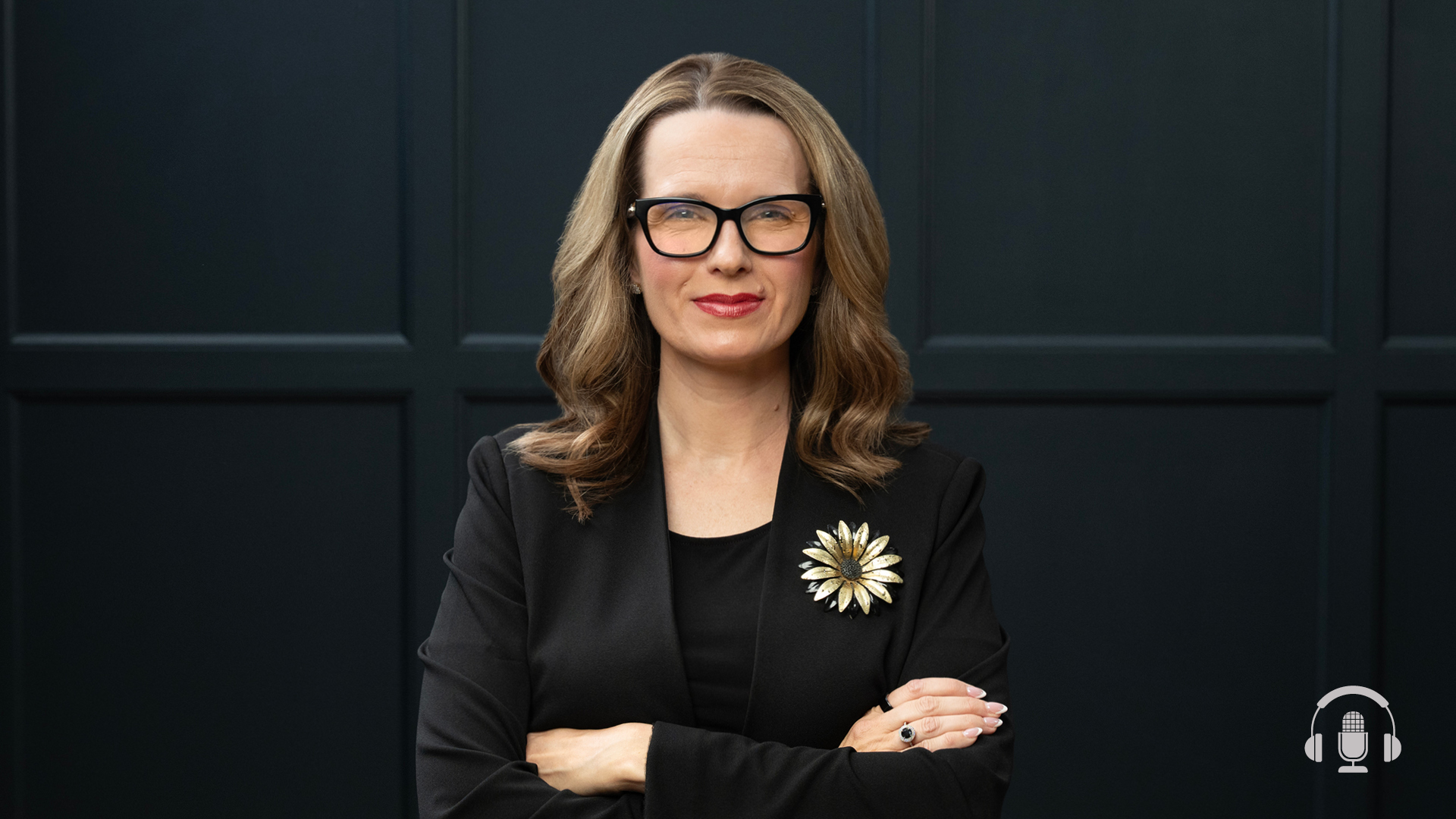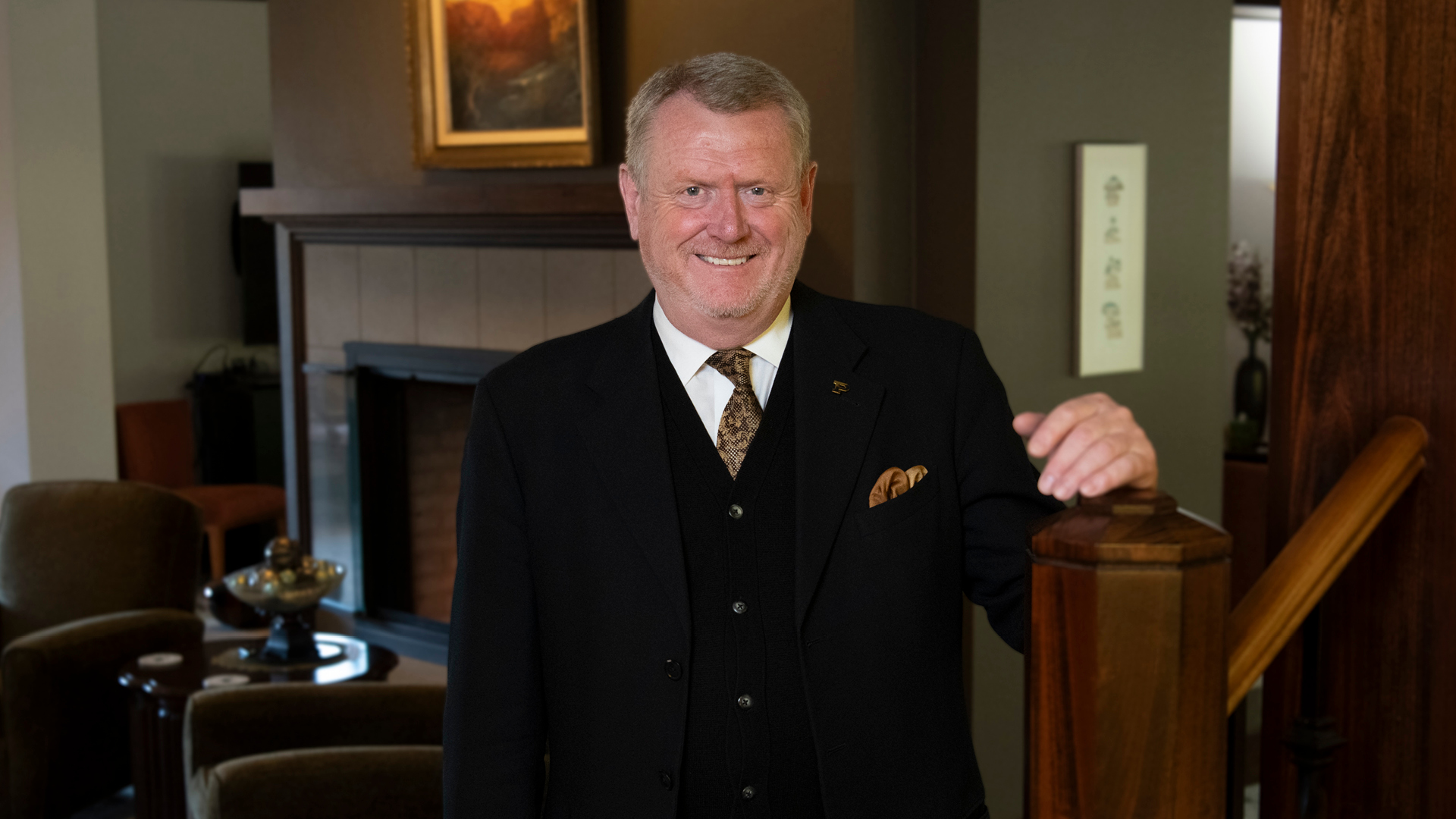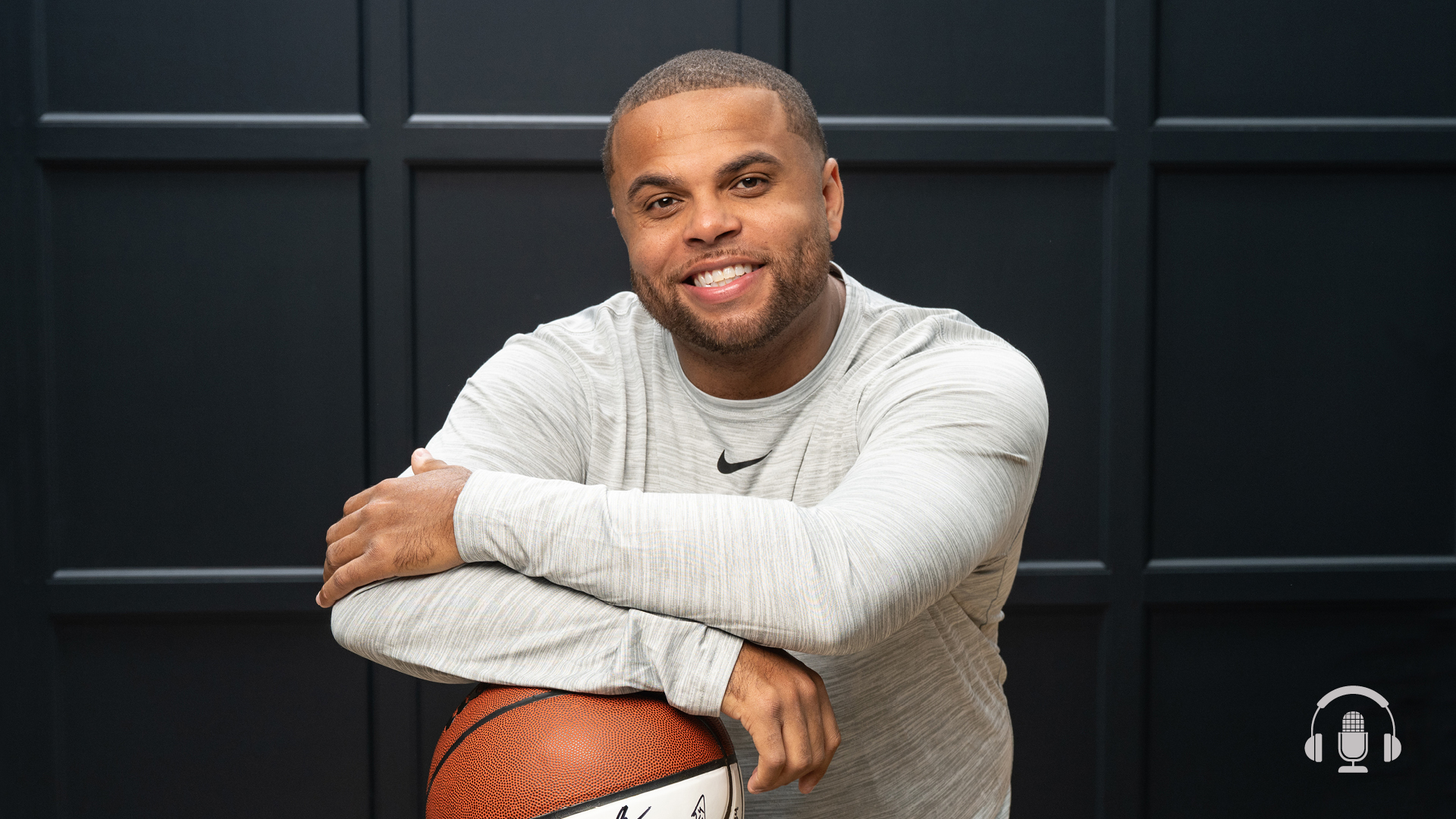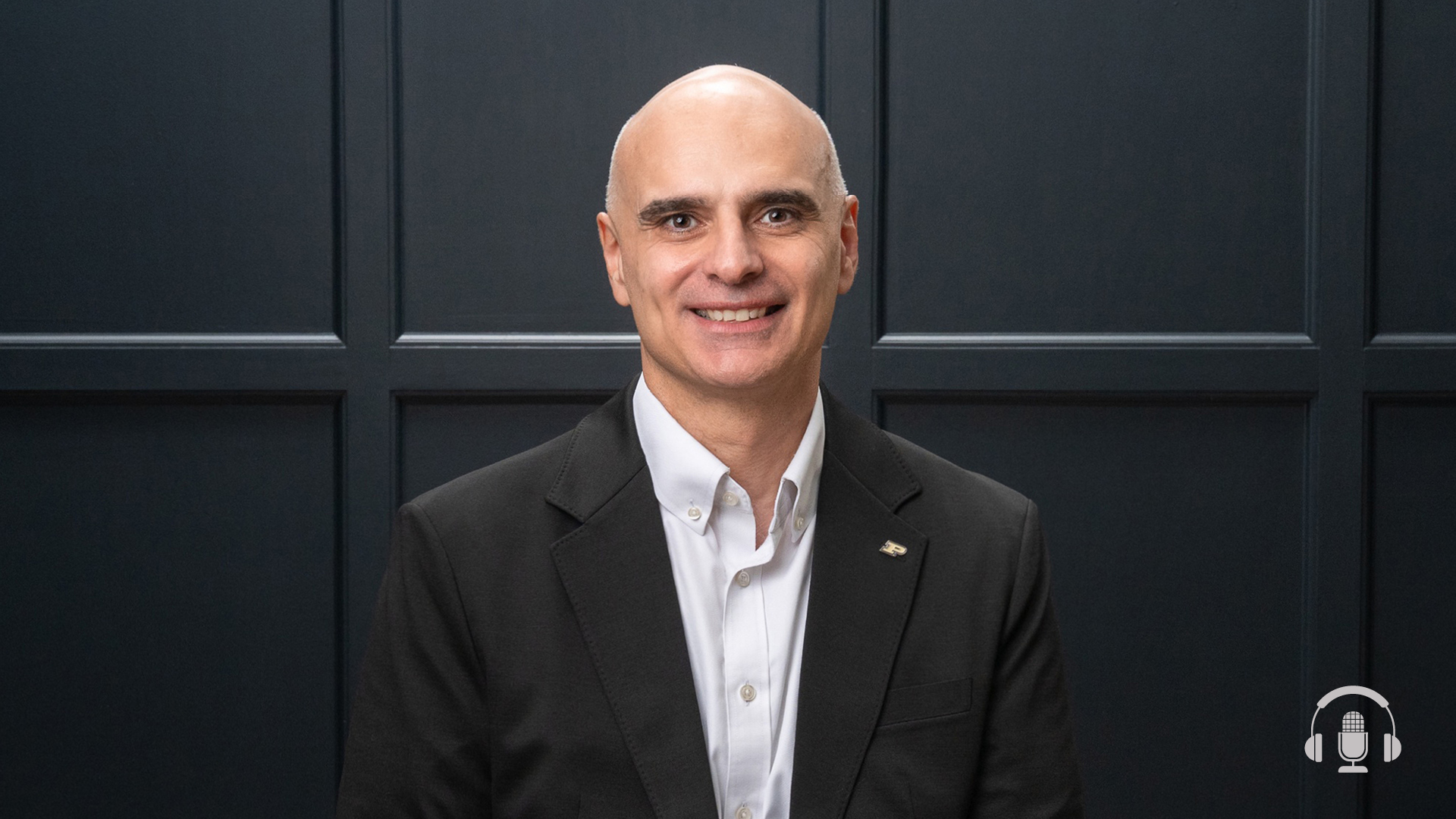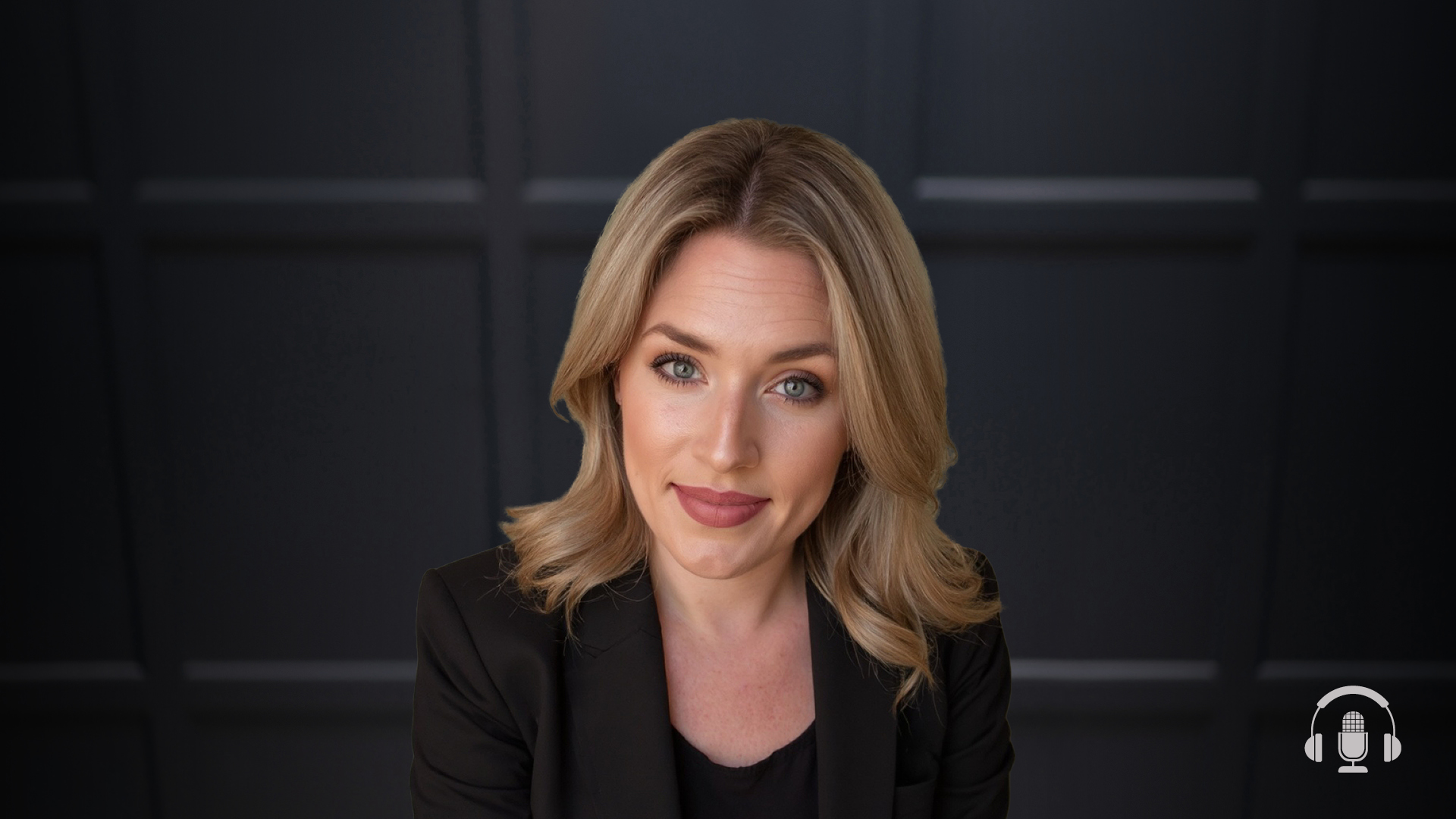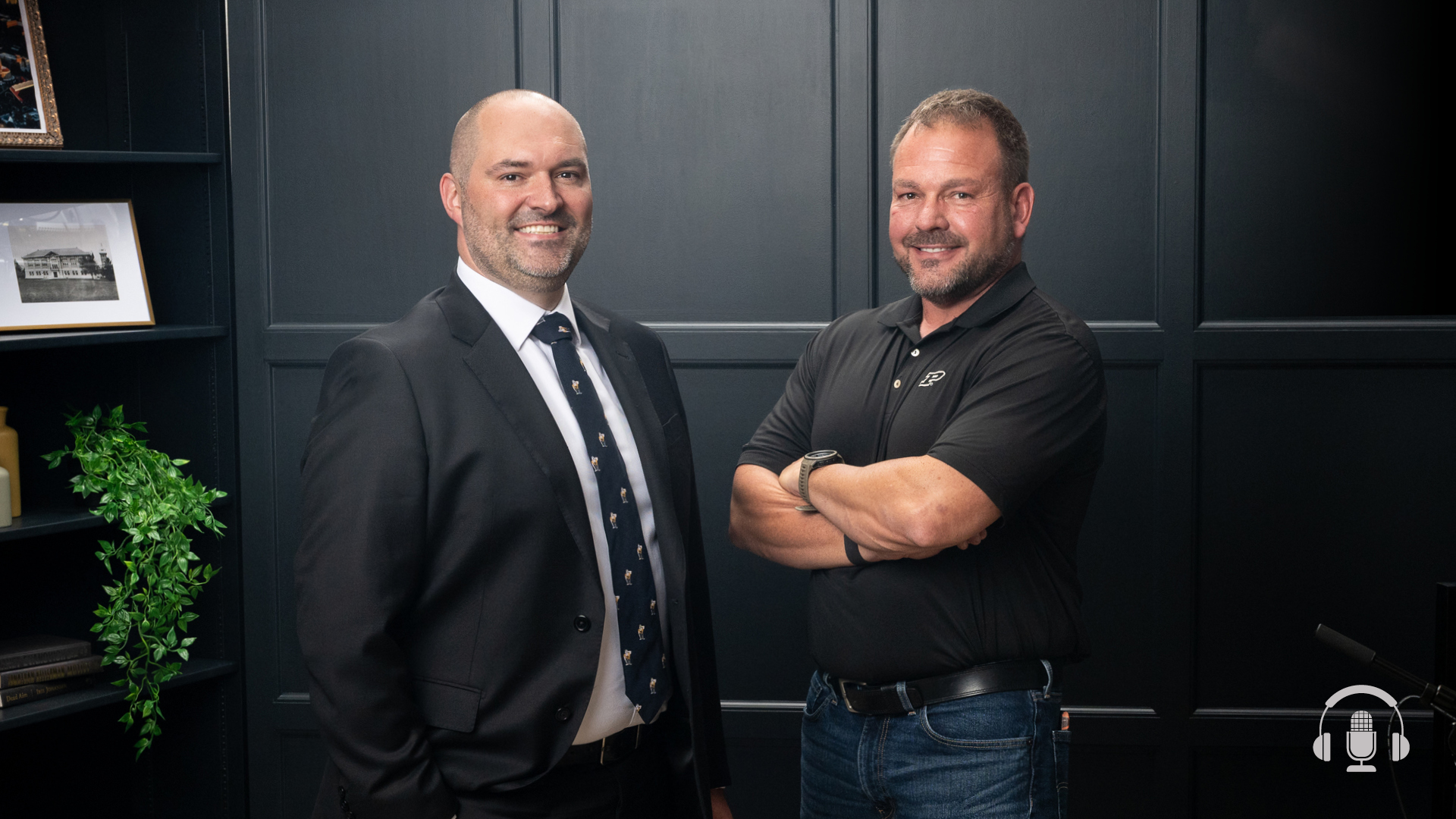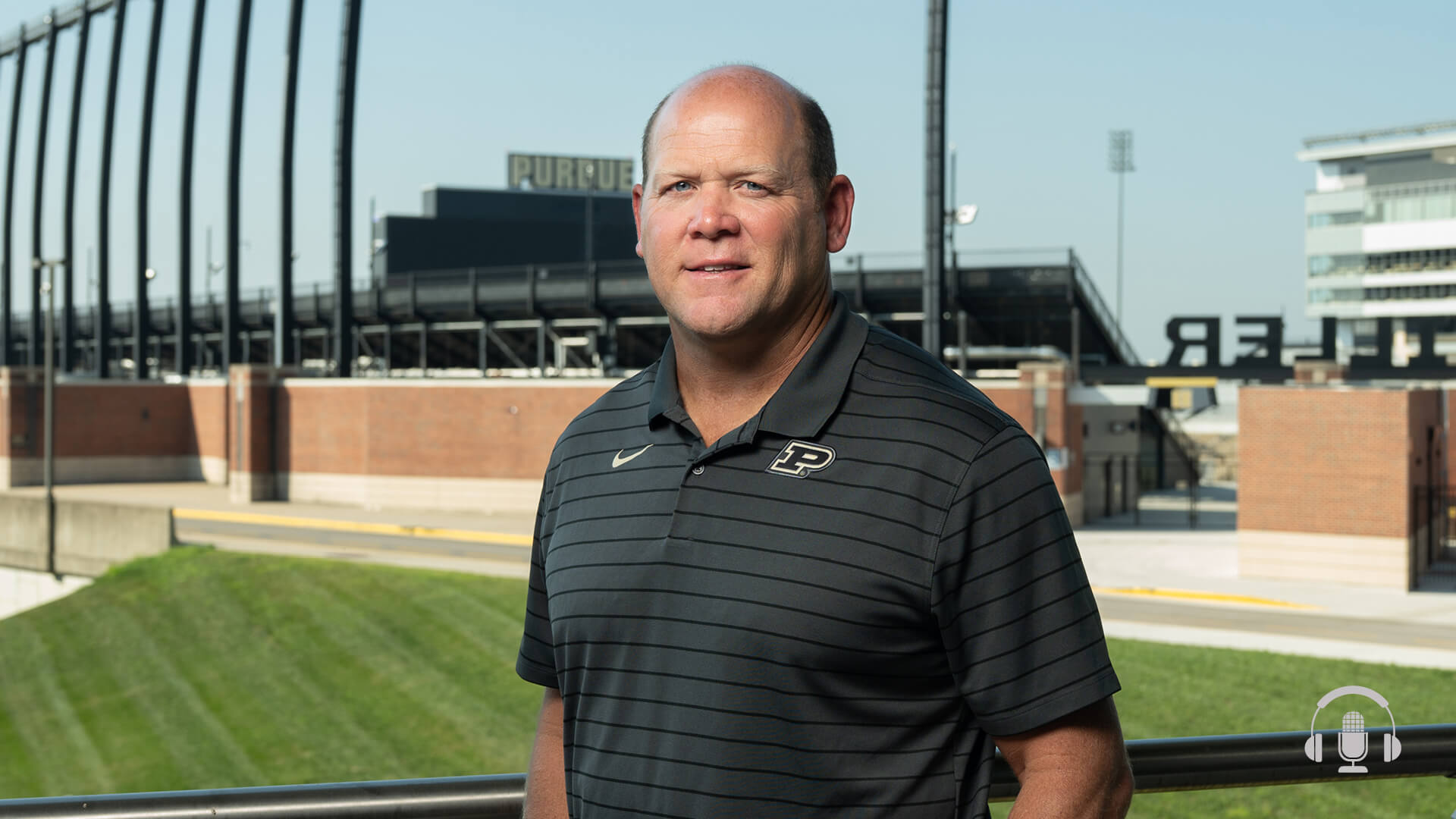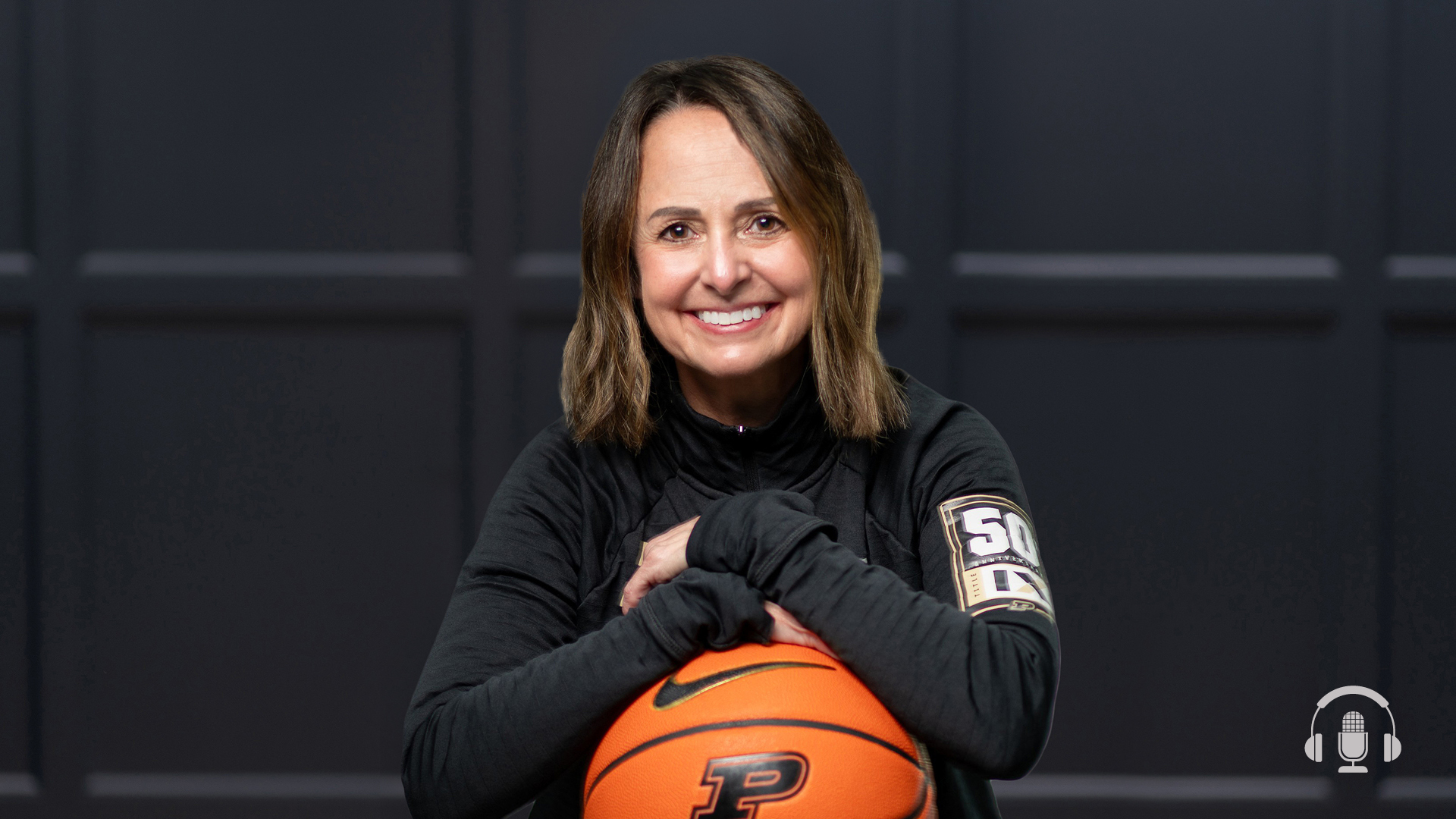Podcast Ep. 120: IndyGo President and CEO Jennifer Pyrz on the Value and Future of Public Transportation

In this episode of “This Is Purdue,” we’re talking to Jennifer Pyrz, president and CEO of IndyGo.
A Purdue engineering alumna, Jennifer (BS civil engineering ’95, MS civil engineering ’97) was appointed president and CEO of Indiana’s largest public transit agency in May 2024.
In this episode you will:
- Discover the advantages Purdue students in Indianapolis can gain from IndyGo buses and transit lines.
- Learn more about Jennifer’s vision for the future of public transportation in Indianapolis, including the recent opening of IndyGo’s Purple Line and upcoming opening of the Blue Line.
- Get to know the numerous ways the entire community of Indianapolis benefits from using IndyGo and the importance of having accessible and well-funded transportation in large cities.
- Find out how Jennifer’s civil engineering degrees from Purdue prepared her to lead IndyGo.
Don’t miss this episode with a Boilermaker who is using her innovative spirit to advance public transit in a city that hundreds of thousands of people call home.
- Learn more about Jennifer Pyrz
- Learn more about IndyGo
- Learn more about Purdue University in Indianapolis
- Learn more about the College of Engineering
- Learn more about the Lyles School of Civil and Construction Engineering
Podcast Transcript
Jennifer Pyrz:
This is Jennifer Pyrz and you’re listening to This is Purdue.
Kate Young:
Hi, I’m Kate Young and you are listening to This is Purdue, the official podcast for Purdue University. As a Purdue alum and Indiana native I know firsthand about the family of students and professors who are in it together, persistently pursuing and relentlessly rethinking who are the next game changers, difference makers, ceiling breakers, innovators? Who are these Boilermakers? Join me as we feature students, faculty and alumni, taking small steps toward their giant leaps and inspiring others to do the same.
Jennifer Pyrz:
I really wanted to just see the world and I knew that Purdue would allow me to do that. I think that was the biggest thing for me was the name recognition, the rigor of the curriculum. I knew that when I graduated I’d be able to go anywhere in the world.
Kate Young:
In this episode of This is Purdue, we are talking to Jennifer Pyrz, President and CEO of IndyGo. A Lyles School of Civil and Construction Engineering alumna, Jennifer was appointed president and CEO of Indiana’s largest public transit agency in May of 2024. You’ll hear more from Jennifer about how Purdue students in Indianapolis can take full advantage of the IndyGo bus lines to greater benefit their student experience, explore different parts of the city and expand their access to internship and job opportunities. You’ll also learn more about Jennifer’s vision for the future of public transportation in Indianapolis, including the recent opening of IndyGo’s Purple Line and the upcoming opening of the Blue Line in 2027.
And how do large events in downtown Indy, such as the recent 2024 NBA All-Star Game in February, or the biggest pop star in the world touring the city for three nights helped to grow IndyGo ridership. She shares more on all of this as well. Plus we dig into how Jennifer’s civil engineering degrees from Purdue helped prepare her for her role leading IndyGo.
Okay, let’s get to it. Here’s my conversation with Jennifer. Jennifer, thank you so much for joining This is Purdue. This is our official university podcast. We’re excited to dive into your past Purdue journey, your current journey leading IndyGo, which is Indiana’s largest public transit agency. So we’re excited to get started.
Jennifer Pyrz:
Me too. Thank you for having me.
Kate Young:
Absolutely. Recently in May you were appointed to president and CEO of IndyGo, and this just benefits so much of the Indianapolis community and now it’s supporting our Purdue students in Indianapolis as well. Tell us a little bit about your background with IndyGo and how has it felt taking on this new leadership role?
Jennifer Pyrz:
I started working with IndyGo as my client when I was in the engineering consulting industry. I think it was back in 2004. So I’ve been working with IndyGo for a long time and just got the pleasure of working for IndyGo starting in 2020. So I started in April 2020, height of the pandemic I had, gosh, so let me go backwards again. The things that I’d worked on with IndyGo, the first job that I had working with IndyGo was to identify bus stops throughout the city and find places where we could put shelters in. So it’s always a goal of IndyGo is to make our stops more accessible and more comfortable for our passengers. So that was our job. We had to find a hundred places to put shelters on the street and it sounded easy at the time. I came quickly to learn about the challenges of public transportation.
Jennifer Pyrz:
So that was first job. Did a number of things over the years, worked on facility, HVAC improvements, lighting, security, did the alternatives’ analysis for the Red Line, which was the original study to help identify what streets the Red Line should run on, where the station should be. And so was super thrilled when IndyGo called me and asked if I would come over in the role of chief development officer. So that was in charge of all of the planning and engineering for not only our bus infrastructure, but also our facility infrastructure.
Jennifer Pyrz:
So again, did that in April 2020 started, there was nobody in the office. We were working from home for a very short period. When you compare it to other businesses, I want to say it was only five or six weeks, but I started during those five or six weeks and got right to work. So did that role for about four years when I was asked to jump in as the interim CEO when our previous CEO departed. So it’s been great. There’s so much to learn. I’ve always really gotten a lot of energy from learning new things and exploring new things, and so this has been just tremendously fun getting to learn all the different pieces of the work that we do, digging in a little bit deeper than I did in my previous role and getting to meet so many new people. So it’s been great.
Kate Young:
I want to go back to engineering. You got your bachelor’s degree in civil engineering in 1995 from Purdue, and then your master’s in civil engineering in 1997. Let’s talk a little bit about your Purdue experience. Why did you decide to pursue civil engineering and why Purdue?
Jennifer Pyrz:
I grew up in a small town in Wisconsin and really was just looking for an opportunity to see what was outside of the borders. We were just outside of Minneapolis, St. Paul, so University of Minnesota was an option. University of Wisconsin was an option, but I really wanted to just see the world and I knew that Purdue would allow me to do that. I think that was the biggest thing for me was the name recognition, the rigor of the curriculum. I knew that when I graduated I’d be able to go anywhere in the world, and so that was exciting to me. I envisioned myself a big city on the coast somewhere, mountains, ocean, all of that. That’s why I picked Purdue. I actually started out in aeronautical engineering and I look back, I think that was how I convinced my parents to let me go to Purdue with out-of-state tuition was, I’m going to be an astronaut mom.
Jennifer Pyrz:
But I quickly learned that I gravitated to something a little bit, I say concrete, which is kind of funny because it’s not meant to be a pun, but something that I can see and feel and touch felt a little bit more comfortable to me. And then I also just felt like civil engineering gave me more flexibility on where I could live and the different options of what I could do. I think I came to civil engineering or engineering in general, not really knowing what I was getting into, but liking math and thinking that that was a good career for women to be in. And then I just sort of found my way from there, just little steps at a time. So I started to narrow, and then I went into civil and I picked structural, and then I moved into transportation. So just sort of narrowing and finding my groove along the way.
Kate Young:
Yeah, and that makes sense. Civil engineering has a few more career paths probably than some of the other engineering verticals.
Jennifer Pyrz:
It felt like it to me at least. Yes.
Kate Young:
Yeah, absolutely. Reflecting back on your time at Purdue, are you able to share any favorite memories, classes, mentors, professors who influenced your career path today?
Jennifer Pyrz:
So many. So many. I’ll try to keep it brief. I’d say the biggest thing that influenced me and my time at Purdue was being part of the Purdue Engineering Student Council. I met so many friends there, met my husband there. We were both on the council together and just had an opportunity to try out leadership roles, kind of peek the creative juices that I might not get in statics and dynamics classes. So that time and the things that I learned and the people I met stay with me of course today. Absolutely a couple professors who jumped to mine, first of all is John Fricker. He taught the transportation classes and sort of showed me the softer side of civil engineering, so more of the transportation planning, the studies, which really spoke to me. I, like I said, was good at math and I liked the math end of engineering, but I’m probably not the traditional sit behind a computer, do research, that type of thing.
Jennifer Pyrz:
So it was nice to see ways in which I could build my career in sort of the gray areas. So it wasn’t all calculations. There’s not always a right or wrong answer. There’s a lot of trade-offs, and I liked that about the work. So John Fricker unfortunately passed away a few years ago, so I think I got to tell him a little bit about how much he meant to me, but I’ll take this opportunity to reinforce that. And then Kumares Sinha was another one. He was my advisor in graduate school, and I think he’s still maybe haunting the halls of civil engineering. I hope so. But great guy, fabulous mentor, was especially in my graduate career, really important to my development.
Kate Young:
So as a Boilermaker, how did Jennifer’s Purdue education prepare her for her role at IndyGo? I asked her about any specific skills or experiences from Purdue that she’s found especially valuable in her current role. Plus we dive into how IndyGo supports Purdue students in Indianapolis by providing accessible and efficient transportation options.
Jennifer Pyrz:
Oh gosh, lots of ways. I would say the leadership opportunities of Purdue Engineering Student Council, I was in Chi Epsilon. Having a chance to lead initiatives, be creative, work directly with faculty was important. And then I think the overall rigor of the program. I was chatting with my husband about this last night because he’s also a civil engineer, and I think that Purdue sets the expectation of success. And so I think we both agreed that that meant a lot. You were expected to show up at that first industrial roundtable and be in a suit and have a resume, and you’re 18 years old and this is all foreign, but they really kind of throw you into things and expect that you will figure it out and succeed. And I think those skills work all the way through your life.
Kate Young:
Absolutely. Our biggest Boilermaker development right now is in Indy, and we’re really excited about our expansion with our new urban campus in Indianapolis. How will these Purdue students benefit from IndyGo’s transportation options?
Jennifer Pyrz:
We have a wonderful network, and Indianapolis is a walkable downtown. It is one of the reasons why we draw so many conventions. It’s easy to get around, and the campus is right on the edge of so many great parts of our community. The transit system connects the campus with the downtown. I like to think it just gets us a little bit further. It will allow students to access housing that maybe is a little bit further away than they would be able to get otherwise. Will allow them access to employers not only in the downtown, but all of the areas of Indianapolis. We’re a pretty big spread out city, and we have employment in so many different areas of the community, and so by having transportation, I hope students will take advantage of that and get out and explore a little bit. There’s so many great opportunities, not only in the downtown area, but all of the different parts, Broad Ripple, and Fountain Square, and Greenwood, and Beech Grove, Motor Speedway.
Kate Young:
Absolutely, yep.
Jennifer Pyrz:
It’s a way to connect and I think a way to save a little bit of money and still get where we need to be.
Kate Young:
Absolutely. I’m a proud former Fountain Square resident, so I love that area. I love downtown Indy. What advice would you offer to Purdue students about navigating and making the most of the transportation? You kind of just touched on that, but how can they really make the most of this great option that they have?
Jennifer Pyrz:
It’s so accessible and it can feel maybe a little intimidating at first. So I would encourage them to check out our website, there is information about how to ride that is very helpful. They also should sign up for our social media channels and follow those because we have a lot of fun social media content that not only teaches them about how to ride, but how to pay for our service and then also how to connect with our community. So definitely sign up for our social media channels and then get a buddy and explore a little bit. I also want to encourage people to reach out to the operators when they get on the bus. The operators know the city better than anyone else. We don’t have operators who are assigned to specific routes. They drive all the routes, so they will know their way around. They’ll be able to help the students connect to not only different parts of the city, but to different routes and certainly start up a conversation, make a new friend.
Kate Young:
As a Boilermaker yourself, how does it feel to contribute to the accessibility, the convenience of public transportation for current and future generations of Purdue students?
Jennifer Pyrz:
It feels great. Our Bus Rapid Transit lines are so exciting to be a part of. They are really groundbreaking. It’s surprising, we have had so many agencies from all over the country come and learn about our Bus Rapid Transit. So being able to provide that premium service to community and to the students, really excited about. So I hope students will take advantage of that. I’m confident it will be a great experience for them.
Kate Young:
One of the biggest projects the IndyGo team has been working on is the Purple Line, which recently started service on October 13th, 2024. The Purple Line travels 15.2 miles and connects Indianapolis to the city of Lawrence. It also brings major infrastructure improvements, including nearly 10 miles of sidewalks, more than 350 ADA curb ramps, new street paving, a multi-use path, storm sewer separation, and much more to advance the community. Jennifer shares more insights into the Purple Line project and its anticipated impact on Indianapolis. Plus, she discusses the meaning behind Bus Rapid Transit or BRT and how IndyGo has been a trailblazer when it comes to BRTs after launching one of the longest BRT routes, the Red Line back in 2019.
Jennifer Pyrz:
The Purple Line is our second Bus Rapid Transit line. It is 15 miles and it goes out of downtown and follows the Red Line north to 38th Street, and then it continues east on 38th Street to Post Road to the city of Lawrence. It will largely replace our Route 39, which is one of our highest ridership routes. So our three BRT lines will be creating three overall, all three of them are along our highest ridership areas. Employment density, residential density are important to supporting Bus Rapid Transit. So 30 stations, about 18 of them are exclusive to the Purple Line, but the rest are shared with the Red Line, and about 90% of them are in dedicated lanes, which means that the service will be faster and more reliable because they will not be competing with cars. Also, safer by not having cars in the same lane as the buses.
Jennifer Pyrz:
Significant infrastructure improvements. So that’s one of the things that we talk about a lot is even if you are not a transit user, you will benefit from the work that these Bus Rapid Transit lines are moving forward. So curb ramps, sidewalks, paths, pavement resurfacing, it’s an absolute transformation how that corridor looks today versus how it looked three years ago before we started construction. We’re also seeing tremendous economic development along the line. There’s a new healthcare center that’s open, there’s a new grocery store, there’s a manufacturing facility for Cook Medical. All of these are things that help that community grow, and it’s been tremendous to watch. And it’s one of the things that makes BRT really so special, is the opportunity there to draw economic development to a community.
Kate Young:
And when you talk about Rapid, that’s because it has its own dedicated lanes?
Jennifer Pyrz:
That’s one of the reasons. So our Bus Rapid Transit has got a number of things that make it transit. Dedicated lanes is an important one. The stations are also important, so we have fewer stations than we did stops. So the bus is stopping less frequently, and they’re raised platform, so when the bus pulls up there, it’s faster and easier for people of all abilities to get on. We also have something called off-board fare collection. So on a typical bus, the bus would stop and people would queue up and walk past the driver and pay their fare. Whereas on our BRT systems, people board multiple doors. They pay off-board at the station, they board multiple doors and the bus just carries on. We also have transit signal priority along all of our Bus Rapid Transit systems. So the bus is talking to the signal and either extending the green a little bit to allow the bus to get through, or sometimes truncating a red, shortening a red light. So lots of different ways in which we make sure that we speed things up and are competitive with the personal vehicle.
Kate Young:
Along with the Purple Line, IndyGo is also working on another Bus Rapid Transit route, the Blue Line, which is scheduled to launch in 2027. Between the Red Line, Purple Line and Blue Line, these three BRTs will bring more than $400 million in safety enhancements and infrastructure improvements to the city of Indianapolis.
Kate Young:
And you’ve said the Blue Line is one of your favorite projects. So what sets that apart and what excites you most about that project?
Jennifer Pyrz:
I guess maybe I love a good challenge. I mentioned that earlier. I love to learn new things-
Kate Young:
Because you’re a boiler maker, you love a good challenge.
Jennifer Pyrz:
Yeah, the Blue Line has been a challenge. Some of it was the timing of it with COVID. We had some significant cost challenges that we had to sort out. Prices increased dramatically, supply chain, labor prices have increased, and that impacted our budget quite a bit. So we worked through that. We’ve also had a number of legislative challenges with the Blue Line, so that was just something else. And it feels good. I consider them to be hurdles. It feels good to jump over each of those hurdles and find a way forward, and I’m really confident that we are going to find a way forward. We are super close. The design’s almost done, and we’ll be putting it out for bid here and hope to be under construction by the time that the snow melts next year, so hopefully February or March. We’re really excited about it. It’s probably the project I’ve been working on the longest. I was involved kind of alongside of it when it was going through the alternatives’ analysis stage. That was in 2013.
Kate Young:
Wow.
Jennifer Pyrz:
And we will start construction in 2025 and be done in 2027 or 2028. So a dozen years of my life working on the Blue Line. A lot of people are super excited because it connects to the airport. It’s 24 miles long east, west, and it’s the culmination of our vision.
Kate Young:
Tell us a little bit about how it differs from the Purple Line? You said it goes through the airport, that’s really important, obviously.
Jennifer Pyrz:
Yeah, so the Red Line is our first one, and it goes north-south through downtown. The Purple Line is entirely north of downtown and goes off to the northeast. And then, yeah, the Blue Line is east-west. So all together they’re intended to form the spine or the backbone of our system and the local routes weave into it. So all of the local routes are also being improved through our Marion County Transit plan, and people will be able to go between the local routes and the BRTs free transfers between the lines to get where they need to go. So overall, once the Marion County Transit plan is completely implemented, we will have vastly improved service from where we were when we started.
Kate Young:
We just talked about challenges. Is there another specific challenge you’ve faced throughout your time at IndyGo and how did you persist and work through it?
Jennifer Pyrz:
I hate to dwell on it, but my biggest challenge was probably the legislative challenge that faced us this year. We have, over multiple years faced legislative challenges and I think people not entirely understanding the benefits that public transportation can bring to a community. I’ll narrow it down to that. The bill that was brought forward this year, I had only been in this role for a month, month and a half when that bill was introduced, and it had the potential to kill the Blue Line altogether. So I worked with our government affairs team, with our government affairs consultants, got to know the legislators who had a stake in the game and had influence and just worked on educating them. And that’s really all it was.
Jennifer Pyrz:
I think it helped that I was an engineer to be able to just lay out the facts and talk about it from a technical perspective and take the emotion out of it, take the passion and agenda out of it. It’s just this is what it is and these are the challenges that we face and this is why we think it’s important. And thankfully, we came out at the end of that legislative session with the project able to move forward. So we’re excited about that. But certainly it was a challenge. I think just persistence and being honest and speaking the facts were what got us through.
Kate Young:
I know a lot of our podcast guests too, say, obviously Purdue prepared me with all these technical components and that the educational things, but also those soft skills and being able to have conversations like you were saying with people and why it’s important and-
Jennifer Pyrz:
Absolutely.
Kate Young:
I asked Jennifer more about the future of IndyGo from expanding transportation accessibility even further to thinking more globally across the entire enterprise.
Jennifer Pyrz:
I mentioned our Marion County Transit plan, so we are not quite done building that out. We rule out certain components of it as we go along. So this October when we open up the Purple Line, we’ll be increasing service on a number of other lines, making some other changes to our local route system to align with that opening and then moving along as we get towards opening the Blue Line again. Some additional tweaks, overall increasing the frequency on many of our routes, aligning our routes better with where development is and making sure that our stops are more accessible. Every year we spend a good amount of attention on making sure our stops are accessible for people of all abilities, and that includes sidewalks and it includes boarding pads, which when the bus pulls up at a stop, if somebody is in a wheelchair and a device, they’re exiting and entering the bus from a solid, safe place.
Jennifer Pyrz:
So usually it’s a concrete pad. They’re not getting off onto a piece of grass. So those are called boarding pads. Sometimes we’re putting in crosswalks or pedestrian signals, things like that, shelters, benches in some locations, all of these things just helping make transit easier to use and just helping the overall environment. Everybody starts and ends a transit trip by walking so we want to make sure that those walking facilities help our customers as well. So yeah, so all of those things are on the books and we’re just working the plan right now, getting that all built.
Kate Young:
Yeah, that’s a great point about starting and ending with walking, because even from Fountain Square, I would walk to that stop, which had a great overhang for protection and benches.
Jennifer Pyrz:
Very good, very good. We do our best. Not all places can accommodate it. That goes back to my original conversation about trying to find places to put a hundred shelters. It’s not as easy as it seems, right of way and electricity for lighting and on and on, but do our best.
Kate Young:
All of these things that you wouldn’t think of. So those are great points. You previously mentioned you are thinking more globally across IndyGo. What does that mean for the future of IndyGo?
Jennifer Pyrz:
We will, always under my leadership, but I’m sure pretty much anyone’s leadership strive to be a world-class transit system. We are looking to always find ways to improve, connect our community, be innovative, be collaborative, be cooperative. So that will continue. And I really want to involve our entire workforce in that. I think there’s lots of ways that everyone in this building and our campuses can contribute to making sure that we’re providing best service to our customers. And the people that are out on the street every day or at our transit center for hours a day know better than me most of the time. So we’re going to work together to find ways to improve value to our customers.
Jennifer Pyrz:
I believe very strongly in being adaptable, being accountable. We take tremendous pride in the work we do, and I want to make sure that the community sees that. I really love meeting people, and it happens over and over and over again, meeting people who work for us. They’re so proud of the work that they do, and I want to make sure that that is felt and that they feel the pride that we have in the work that they do as well. So also looking at ways in which we connect maybe with other city agencies, regional partners, elected officials to just continue to bring our customers increased value.
Kate Young:
I was reading a couple articles that when we’re having these huge events in downtown Indy, the recent NBA All-Star Game, that really helps boost IndyGo ridership. We have the biggest pop star in the world coming to downtown Indy in November. What are your goals for continuing to grow ridership, especially during these popular events?
Jennifer Pyrz:
Ridership is critical, of course to our business. It is why we exist. It’s also a source of revenue for us. So ridership is one of the key things that we focus on growing. We largely gain ridership by being reliable, and so our reliability is important, and that means having operators ready, working through issues like traffic congestion, that’s where the dedicated lanes come in, but also working on a transit signal priority, working with IMPD in the city of Indianapolis to prioritize transit when we can.
Jennifer Pyrz:
When there’s closures around the city we always try to, and the city’s been really great working with us, trying to at least keep transit able to go through an area. We are always looking at the comfort of our facilities, if we can be reliable, sort of that base level of need. People need to be able to know that they’re getting to where they need to go when they expect to be there, and then the comfort comes into it. So continuing to improve our stops and our stations and making sure that our buses are comfortable. And then frequency of course is important too. It’s a lot easier to schedule your life around a bus that’s coming every 10 minutes versus every 30 or 60. So frequency is super important to us and part of our Marion County Transit plan objectives.
Kate Young:
Are there any other specific goals for IndyGo over the next few years? I know the Blue Line is a big one, like we talked about. Anything else?
Jennifer Pyrz:
Sure is, yes. So of course, building out all of the things that we’ve promised, but we are also working on an update of our strategic plan, and there’s three things that I really am going to focus the agency on over the next few years. One of them is ridership, building the ridership. We talk about finding that hidden demand and capitalizing on that. So the MBA All-Star weekend is like that, where that hidden demand is and how do we draw it out.
Jennifer Pyrz:
Another one is protecting our operators and frontline workers. The world is changing and our operators and the folks that work at the CTC with the public are running into some challenging situations sometimes, and we want to make sure that we give them the tools and the support that they need. So that is one of our strategic objectives. And then the third thing is focusing on the long-term future. Obviously, we have been spending a lot of time building and focusing on maintaining, is our next step. So making sure that for the long run we’re fiscally responsible that we continue to bring value to our customers and that we’re ready to meet the needs.
Kate Young:
What legacy do you hope to leave at IndyGo, but also within the city of Indianapolis?
Jennifer Pyrz:
I don’t think a lot about my legacy, but I guess I want to make sure I leave things better than when I started. So always looking for ways in which to improve, small ways, big ways. I guess the other thing, well, leaving the agency ready for the long-term, so back to that fiscal sustainability, long-term future that I mentioned. And then I think probably the big thing that I am hoping to do is sort of change the conversation about the value of public transportation. I’d like for our community to really understand how important it is to have a well-funded accessible public transportation system for the city. Every dollar that is invested in public transportation, this is a study that the American Public Transportation Association and numerous others have done. Every dollar that is put into the public transportation system reaps three to $5 depending on what study you look at.
Jennifer Pyrz:
Three to $5 in benefit, and that comes from lots of things. Public transportation is sort of the great equalizer. It connects people to economic opportunity. It is safer way to travel than my car. It’s also healthier. Some of that is that walking to and from gets people active. It also reduces mental stress. It connects people with each other. People can save money, reduce gas consumption, reduces traffic congestion on the roads. We tend to, I think, underestimate, undervalue the impact that public transportation can have on communities. Another thing it does that we don’t talk about very much is it allows us to build more densely, which then reduces the sprawl that eats up farmland and requires us to build highways and more roads. It allows us to use our resources more wisely and efficiently if we can be more dense. This is kind of big picture, but it’s something if I were to leave a legacy, I would love to shift that conversation a little bit and help people just be more, I guess, understanding of what it is we offer.
Kate Young:
Yeah. I love the conversation around why public transportation is important, especially for people in Indiana who have maybe lived in the suburbs or out in the country a lot of their lives. I don’t think unless you’re going to New York City or Chicago, you really grasp we have a great public transportation system in Indy too.
Jennifer Pyrz:
And it benefits them even if they don’t live, if you live out in the country and you want a peaceful, quiet country place to live. I lived out in the country growing up, and so I understand how valuable that is. But it benefits them to have a nice dense urban center that is supported by public transportation so that we’re not building low-density housing on their pristine farmland.
Kate Young:
According to a new ranking by strategists, Purdue is a number one public university for producing Fortune 500 CEOs. I asked Jennifer what she thinks makes Boilermaker leaders so unique.
Jennifer Pyrz:
Hard to put my finger on. I think some of it maybe goes back to the things I was talking about before about the rigor of the education, the expectation for success. I think the size of Purdue and the level of opportunity that it provides to find what drives every individual, the leadership opportunities, opportunities to get involved. I remember when I went to Purdue and a lot of my friends went to very small schools from Little River Falls, Wisconsin, and Purdue seemed so big and far away, and I often said to them, it is what you make it, and it is as small as you want it to be once you find your group. And I could walk across campus any given day, and I’d see three people that I knew in between classes no matter what part of the campus I was at. But the big part of Purdue was so valuable to me in that there was something for absolutely everyone.
Jennifer Pyrz:
And I encourage, when I meet with students nowadays, I encourage them to get involved in anything. If I’m hiring a civil engineer, they don’t have to be the leader of the ASCE or SWE or one of the engineering related organizations. They can be the head of the bowling team or they can be the head of the Grand Prix stuff. There are so many opportunities. Anything you want is available to you. So I think that helps build a lot, as you were saying too. A lot of skills that you don’t necessarily get in the classroom.
Jennifer Pyrz:
But certainly the classroom, the way that we are taught to think, especially in engineering, but I am assuming it’s broad across Purdue, but the way that we’re taught to think is really important too. We know that we’re not always going to get it right the first time. So that scientific method thing, right, is we learn to put out a hypothesis and test it and then not get discouraged when it doesn’t work. We know how to find the tweaks that need to be made to make it better, better, better, better until we get it right. That’s my theory.
Kate Young:
Jennifer ends with her next giant leap. And one last note on the value and importance of public transportation.
Jennifer Pyrz:
Opening the Purple Line in October and getting the Blue Line under construction are huge focuses for me. We also are going to be building a new fleet terminal and maintenance facility. So those I would consider giant leaps in the future of IndyGo, at least. As for me personally, I kind of learned not to plan it all out. I used to be a big planner and I had my whole life mapped out. I mentioned I was going to live in this big city and mountains and oceans and everything else, and my life turned out different than I imagined when I was 18, but probably way better also. I’ve just, as I get older, realize that sometimes you just got to take life as it comes and you’ll be rewarded with all sorts of unexpected wonderful things. So I’m thrilled to be in the position I’m at. I have no idea what will be next. I would love to retire from here. So maybe my next giant leap is going to be retiring and spending time with some future grandkids. That would be awesome.
Kate Young:
I love that. I love that.
Kate Young:
Well, we can’t thank you enough for joining us today. Is there anything else that you think is important to share with our listeners?
Jennifer Pyrz:
I could stress, again, the importance anything of the public transportation industry, and that I hope that the work that we do really can be recognized, employs hundreds of thousands of people worldwide. We have 800 people here in Indianapolis. There are 96, I learned different businesses in Indiana that support the public transportation industry, from the companies that build and assemble buses to wheelchair lifts, all of the systems, materials, supplies. So it is a far-reaching industry, even if you don’t live in Indianapolis. I think most people that are listening to this podcast are touched in some way and benefit in some way from public transportation. So I’ll maybe leave it with that. That’s perfect.
Kate Young:
That’s perfect. Well, thank you again. It was a pleasure talking to you.
Jennifer Pyrz:
Thank you, Kate. I really had a lot of fun. Thanks for inviting me.
Kate Young:
The, This is Purdue podcast team took a field trip to visit Jennifer and her team at the IndyGo headquarters in downtown Indianapolis for this special episode. We got to experience what it’s like being part of Indiana’s largest public transportation provider, and we even had the chance to ride on an IndyGo bus. You can watch our team’s experience on the bus and check out a rapid-fire Q&A with Jennifer while we’re riding an IndyGo bus on our, This is Purdue podcast YouTube page, youtube.com/@ThisisPurdue, and as always, be sure to follow This is Purdue on Apple Podcasts, Spotify, iHeart Radio, or wherever you get your podcasts.
Kate Young:
This is Purdue is hosted and written by me, Kate Young. Our podcast videography for this episode was led by Ted Schellenberger in collaboration with Thad Boone and Zach Mogensen. Our social media marketing is led by Maria Welch. Our podcast distribution strategy is led by Teresa Walker and Carly Eastman. Our podcast design is led by Caitlin Freeville. Our podcast photography is led by John Underwood. Our podcast team project manager is Rain Gu. Our podcast YouTube Promotions is managed by Kirsten Bauman. Additional writing and research assistance is led by Sophie Ritz. And our This is Purdue intern is Caroline Keim. Thanks for listening to This is Purdue. For more information on this episode visit our website at purdue.edu/podcast. There you can head over to your favorite podcast app to subscribe and leave us a review. And as always, Boiler up.
